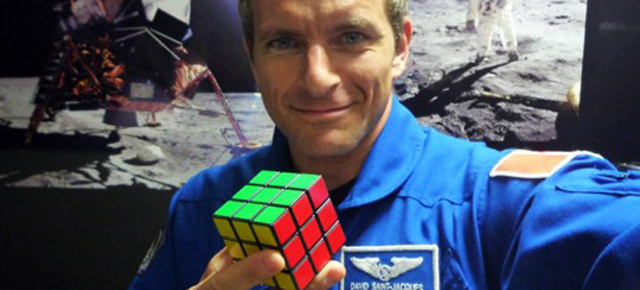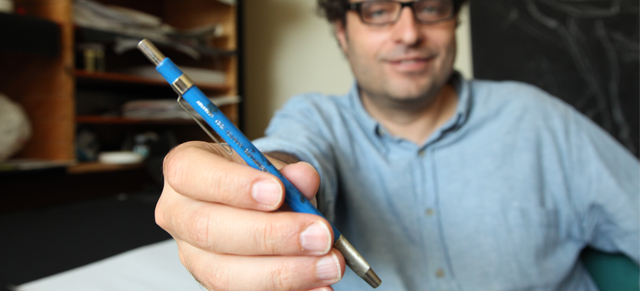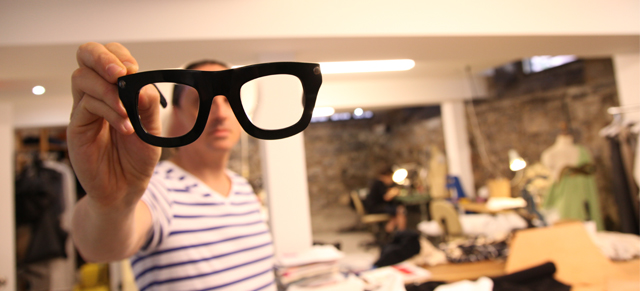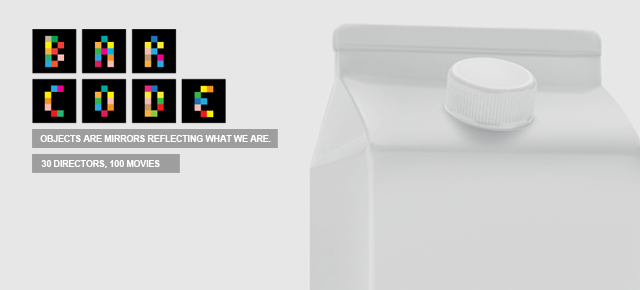
BARCODE.tv – From a Rubik’s cube to the Canadian Space Program
BARCODE.tv – From a Rubik’s cube to the Canadian Space Program
The following is a guest post by Anne-Marie Lavigne
* This post is a translation.
BAR CODE hinges on the concept of “mining” everyday objects for the stories they harbour. Through the project’s website and iPhone app, explore the secret world of day-to-day items by watching the short films triggered by their bar codes and by sharing your own stories about the objects in your life.
We asked Canadian astronaut David Saint-Jacques to tell us about an object of significance to him. He chose his Rubik’s cube.
The Rubik’s cube came into my life 35 years ago. My father gave it to me during a family road trip. I tended to get bored in the car, so he bought it to keep me entertained. He often presented me with hidden challenges: it was his way of getting me to push my limits.
The minute I began playing with it, I knew it was for real. A challenge. A grownup affair. It was an utter mystery to me, impossibly complex; something beyond my abilities that I had to work at to succeed. My dad also bought me the instruction manual, and by the end of summer, I’d mastered it. It was my first real exercise in having to focus. It kept my attention for a spell, then I put it aside and forgot all about it for the next 30 years.
I came across my Rubik’s cube three years ago when packing up to move to Houston for the space program selection camp. It’s accompanied me throughout my training, becoming my friend. It seems to embody the whole challenge of the NASA selection process. When I was eventually chosen (along with 9 Americans, 3 Japanese, 2 Canadians and 6 Europeans) to be part of the 20th space cohort, it was as if things had come full circle.
In some ways, the Rubik’s cube symbolizes the supreme ambition of all engineers. We work endlessly to create objects that hide the complexity of their technique. The Rubik’s cube is beautiful, and also very much of the 80s. It’s elegant, balanced, and full of possibility. It comes close to perfection, both technically and aesthetically. I like the cube because it has an inside and an outside. If you take it apart, you discover a very complex internal design. It’s a symbol of human ingenuity. We engineers spend our lives inventing and thinking about objects, yet seldom do we create anything so perfect. The Rubik’s cube offers a fun take on technology. Its complexity is so seamless that you think it’s simple.
The same goes for astronauts. In space, they rely completely on the complexity of the machine. Once I’m in orbit, more than 10,000 people will be working full time to keep everything operating smoothly. It’s like invisible hands working from the inside. The space program is a testament to human vision. It’s at the core of what make us tick: our technical prowess and our humanity. The slightest error and everything falls into question. Technology and control are pushed to their limits as, paradoxically, the human species lives in an extremely fragile biosphere.
The very existence of the space program has helped me come to terms with this fragility. The space program is one of the reasons behind today’s environmental awareness. Space travel has made it clear how infinitesimally small our planet is. It’s made us realize that the Earth is vulnerable and that it is part of us, not something external; that we only have one Earth and must take care of it.
Most of my career as an astronaut centres on robotics and technology. Within the NASA team, my job consists of ensuring the optics for those who go into orbit. My colleagues and I have been trained for 6-month flight missions. As an astrophysicist, I’ve always been fascinated by anything that’s off the face of the earth — the cosmos, all that is hidden from us during the day.
I haven’t yet gone into space. Already, just being here as part of this international program is fantastic. Space is still an abstraction, a vague notion. My fellow astronauts say, “You’ll see: it will happen. One day you’ll go into orbit.” I still don’t quite believe them.
Ironically, once we’re up there, we’ll have precious little space. I can only take along one box of personal belongings. I think I’ll bring the Rubik’s cube. It sums up our basic human dichotomy. It encompasses both aspects of our nature: our emotional, aesthetic side, and our complexity, our practical nature. To succeed, you need to be able to dream, project yourself into some other space; but you also need to be able to use your head. The Rubik’s cube couldn’t have been invented by someone who didn’t have soul. It’s the creation of someone with the head of a builder — and the heart of a child.
Bio
Prior to joining the Canadian Space Program, David Saint-Jacques was a medical doctor and the Co-Chief of Medicine at Inuulitsivik Health Centre in Puvirnituq, an Arctic village in northern Quebec. He started his career as a biomedical engineer but went on to study astrophysics and medicine. His postdoctoral research included the development and application of the Mitaka Infrared Interferometer in Japan and the Subaru Telescope Adaptive Optics System in Hawaii (1999 to 2001), after which he joined the astrophysics group at Université de Montréal. His international experience also includes work and study in France and Hungary and medical training in Lebanon and Guatemala.


